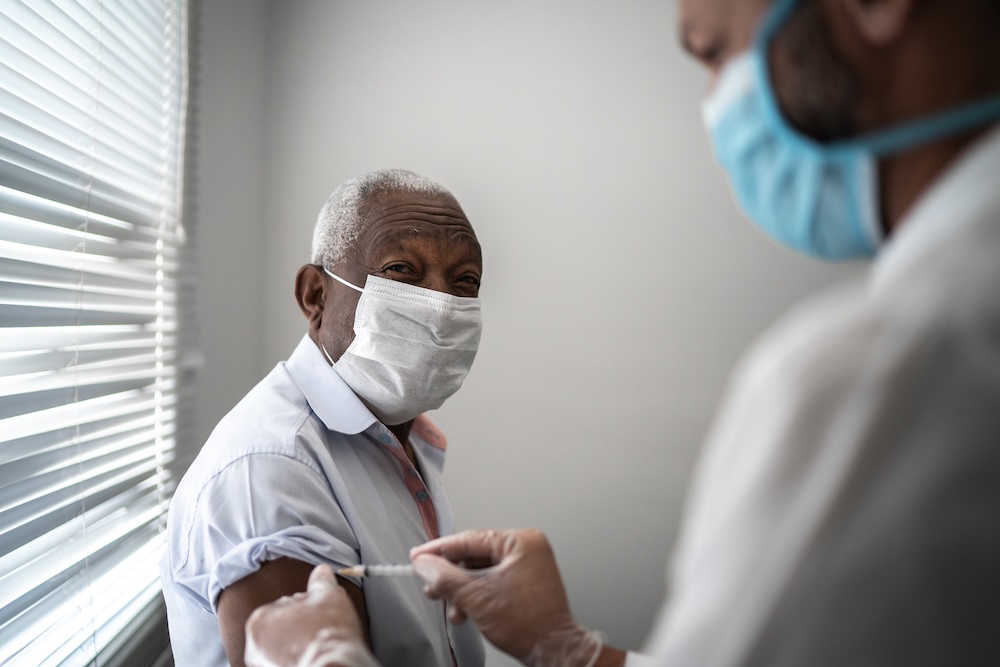Kaiser Permanente research suggests studies that follow breast cancer survivors over time should differentiate between fracture types
Certain endocrine therapies used to treat hormone-sensitive breast cancer are known to cause bone loss and increase fracture risk. A new Kaiser Permanente study suggests it’s important for researchers who study these treatments to track not only whether a patient experiences a fracture — but what caused it.
The study, published November 17 in JAMA Network Open, analyzed data on 5,010 women in Kaiser Permanente Northern California who were diagnosed with hormone-sensitive invasive breast cancer and treated with endocrine therapy. The research team reviewed each woman’s medical records to determine the type of fracture she developed, differentiating those that were cancer-related — caused by metastases — from those that were not.

“This new study was influenced by our Pathways Study, which is one of the largest prospective studies following breast cancer survivors for health outcomes after cancer diagnosis,” said the study’s lead author Joan C. Lo, MD, a research scientist at the Kaiser Permanente Division of Research who studies osteoporosis, and a physician with The Permanente Medical Group. “As we began to study fracture outcomes in this group it became clear we needed to separate fractures which were pathologic — meaning caused by the cancer — and fractures which were likely related to bone fragility.”
Over a median follow-up of 6.7 years, the researchers found that 340 (6.8%) of the women experienced a fracture: 46 in the hip, 104 in the spine, 78 in the upper arm, and 137 in the wrist. Very few of the fractures in the wrist or upper arm were cancer-related, compared to 5 of the 46 fractures in the hip and 22 of the 104 in the spine.
More than 281,500 women are expected to be diagnosed with invasive breast cancer in 2021. About 70% of these women will have tumors that are fueled by estrogen, and most will have treatment that includes endocrine therapy, which is typically taken for 5 to 10 years. More than half of all women treated with endocrine therapy will be prescribed an aromatase inhibitor. These medications slow or stop tumor growth and reduce risk for recurrence. But they also lower the level of estrogen, increasing the risk of osteoporosis and bone fractures.
. . . it became clear we needed to separate fractures which were pathologic — meaning caused by the cancer — and fractures which were likely related to bone fragility.
— Joan C. Lo, MD
But this isn’t the only way fracture risk increases in women with breast cancer. Fracture risk also increases when a tumor metastasizes and spreads to the bone. Breast cancer is one of the common cancers that can spread to the bone, and the spine is a primary bone site where metastases can develop.

The researchers said the findings will help them frame future research questions on endocrine therapy and bone health in the Pathways Study. “Our findings suggest that making a research distinction between the fractures that are cancer-related and those that are fragility fractures will help us better understand the impact of endocrine therapy on bone health,” said the study’s senior author Marilyn L. Kwan, PhD, a research scientist at the Division of Research and a Pathways Study co-investigator. “More specifically, it will allow us to better differentiate the effects of the treatment verses the effects of the cancer as we follow breast cancer survivors over time.”
Added Lo, “Our findings are also a good reminder for primary care physicians to consider the possibility of pathologic fracture in higher-risk breast cancer survivors who present with a new spinal fracture.”
This study received funding support from the National Cancer Institute.
Co-authors include Cecile A. Laurent, MS, Janise M. Roh, MSW, MPH, Jean Lee, and Malini Chandra, MS, MBA, of the Division of Research, and Song Yao, PhD, of the Roswell Park Comprehensive Cancer Center.
# # #
About the Kaiser Permanente Division of Research
The Kaiser Permanente Division of Research conducts, publishes and disseminates epidemiologic and health services research to improve the health and medical care of Kaiser Permanente members and society at large. It seeks to understand the determinants of illness and well-being, and to improve the quality and cost-effectiveness of health care. Currently, DOR’s 600-plus staff is working on more than 450 epidemiological and health services research projects. For more information, visit divisionofresearch.kaiserpermanente.org or follow us @KPDOR.





Comments (0)